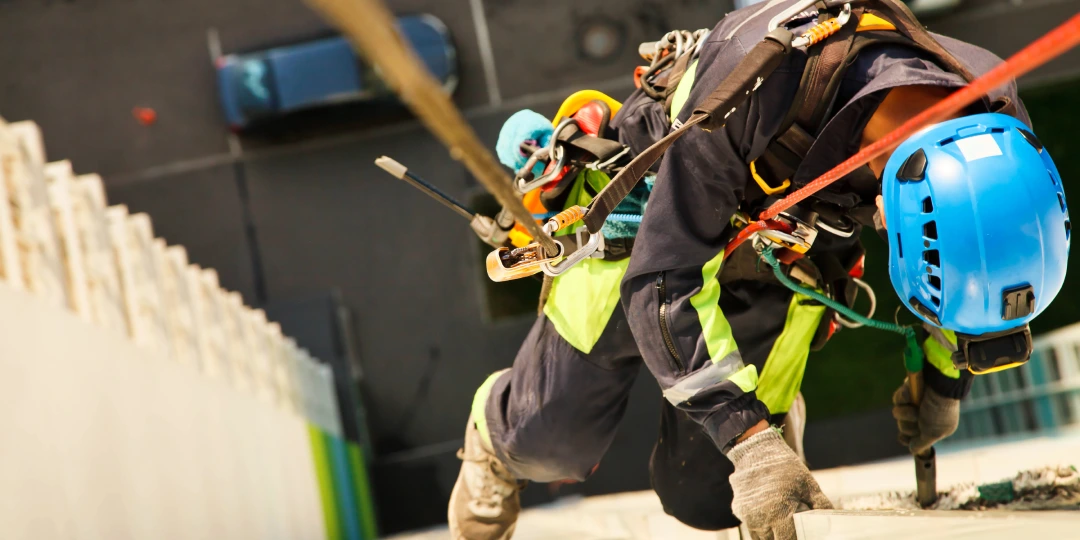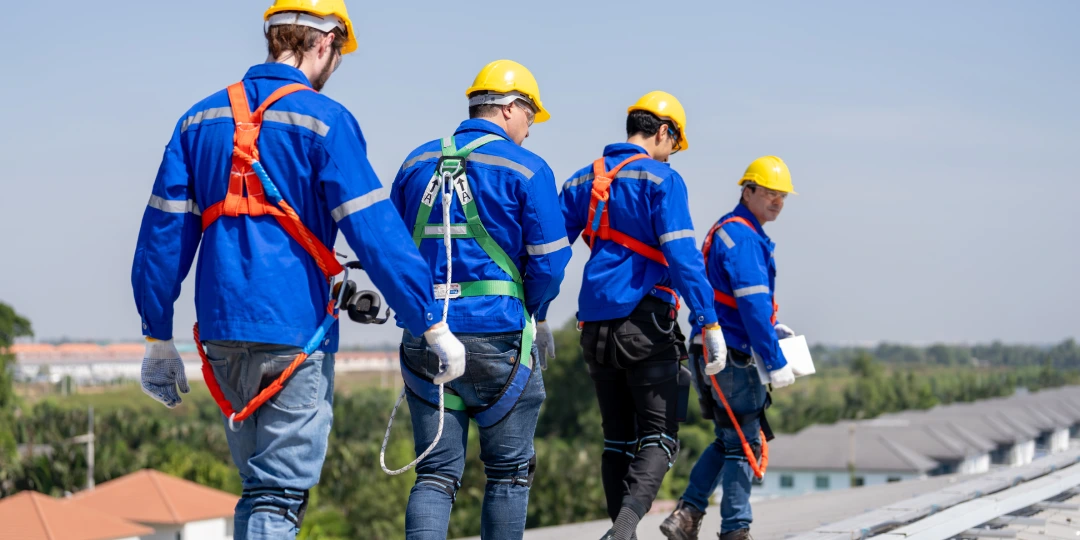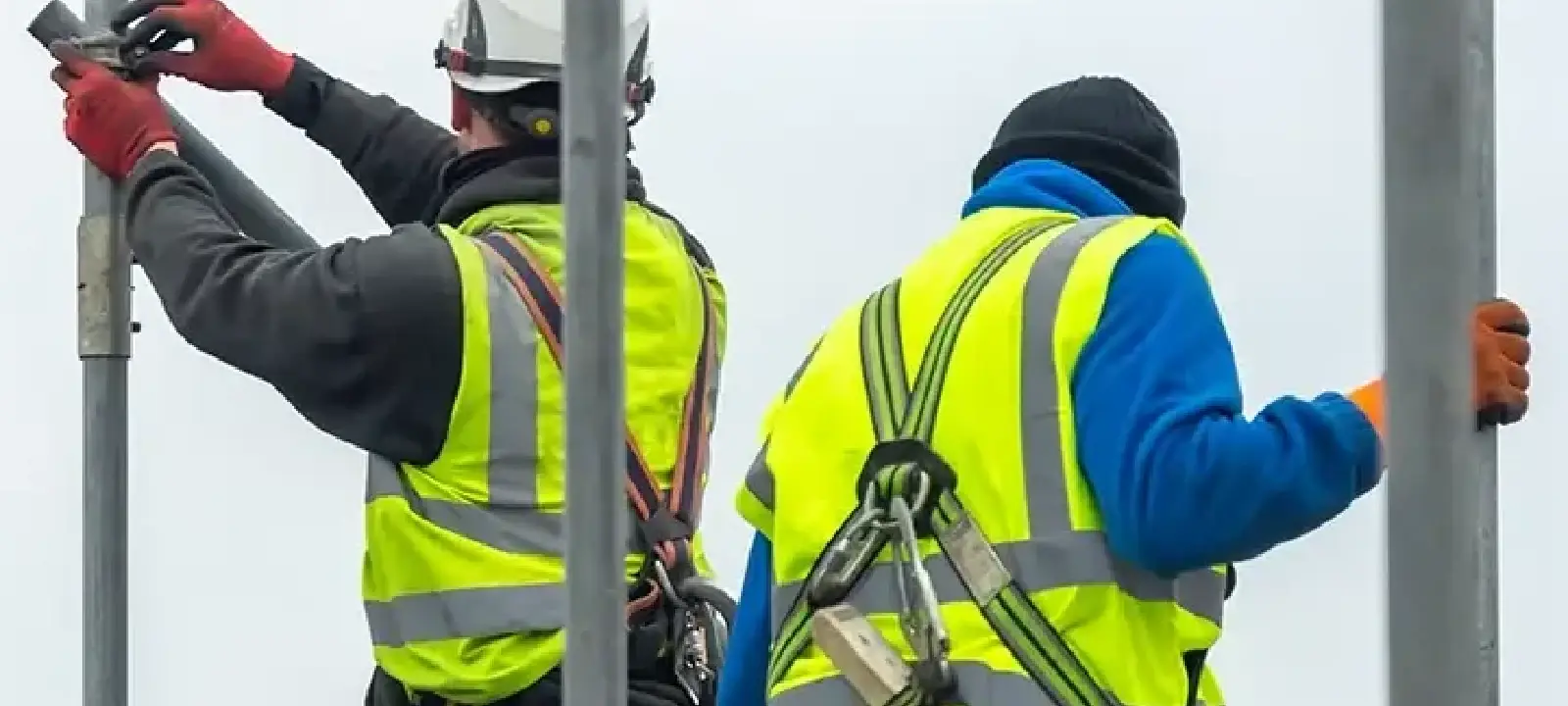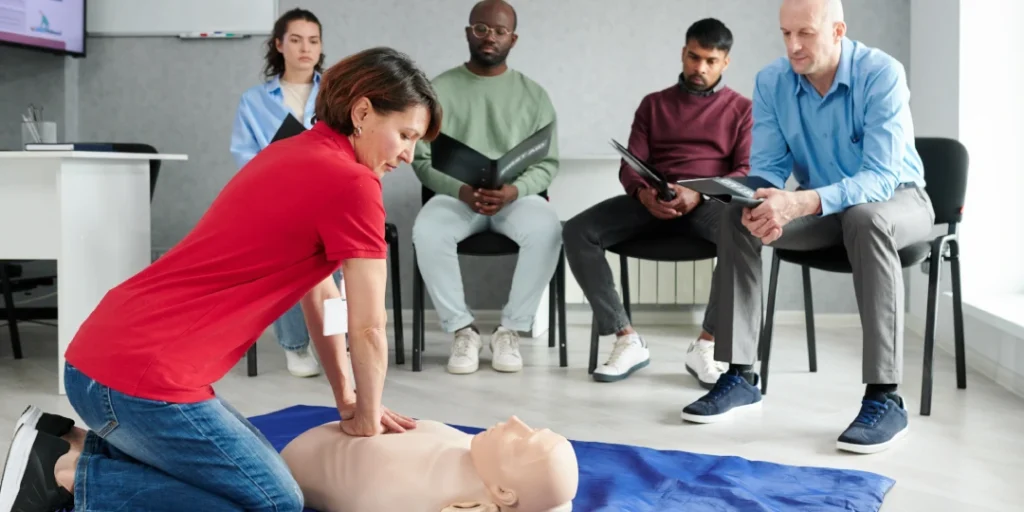Introduction: The Imperative of Fall Protection in Nashville Workplaces
In Nashville, Tennessee—a city celebrated for its vibrant growth and expanding economic sectors—workplace safety is increasingly critical. As the metropolitan area experiences continuous growth in construction, manufacturing, and industrial operations, the exposure of workers to potential hazards escalates proportionally. Among these hazards, falls consistently rank as one of the most prevalent threats, posing severe risks to worker safety and organizational integrity.
Falls can lead to catastrophic consequences, ranging from debilitating injuries and long-term disability to fatalities. The resultant impact not only affects the injured workers and their families but also imposes considerable financial and reputational damage on businesses. Costs associated with workplace falls include medical expenses, workers’ compensation claims, lost productivity, and potential litigation—burdens that no business wants to bear.
Therefore, implementing an effective fall protection program is both ethically and operationally indispensable. Fortier Loss Control addresses this necessity by developing and providing targeted fall protection strategies that are customized to meet the distinct requirements of Nashville’s diverse industries. Such proactive measures significantly reduce risk exposure, demonstrating organizational responsibility toward workforce safety and wellbeing. Moreover, businesses prioritizing safety through comprehensive fall protection enjoy enhanced employee confidence, improved workforce retention, increased productivity, and strengthened market reputation. Simply put, investment in fall protection is not merely compliance-driven; it is a strategic decision vital to sustainable business success in Nashville.
Understanding OSHA Fall Protection Regulations
The Occupational Safety and Health Administration (OSHA) outlines stringent guidelines designed explicitly to minimize the risk of falls in workplace settings. OSHA’s regulations are crafted with the intent of providing clear standards for employers to ensure adequate protection of their workers, particularly in tasks involving elevated work areas.
In Nashville, businesses operating in the general industry sector are mandated to provide fall protection for workers exposed to elevations of four feet or higher. In construction, the requirement becomes even more stringent, with fall protection mandated at six feet or above. The specific OSHA regulations (such as OSHA Standard 1926 Subpart M for construction and OSHA Standard 1910 for general industry) detail precise requirements regarding the types of acceptable fall protection systems, including Personal Fall Arrest Systems (PFAS), guardrails, safety nets, positioning systems, and warning lines.
Moreover, OSHA mandates that employers implement thorough hazard identification and evaluation processes to preemptively recognize and mitigate potential fall risks. Organizations must also conduct comprehensive training programs for all employees working at height. These training programs must include detailed instruction in equipment usage, hazard awareness, preventive measures, and emergency response procedures.
Crucially, compliance goes beyond mere adherence to regulations; it requires detailed documentation demonstrating the implementation and ongoing maintenance of fall protection systems, training logs, regular safety audits, inspection records, and corrective actions taken following hazard identification. Employers failing to meet OSHA standards face significant penalties, legal exposure, and reputational harm, emphasizing the critical nature of proactive compliance management.
Through rigorous adherence to OSHA’s fall protection guidelines, businesses in Nashville are positioned not only to avoid penalties but also to foster safer, more efficient, and morale-boosting workplaces. Fortier Loss Control helps companies navigate these regulations expertly, ensuring seamless compliance and optimized protection for their employees.
Strategy 1: Comprehensive Workplace Risk Assessment for Effective Fall Protection
A comprehensive workplace risk assessment is foundational for effective fall protection. This process involves systematically identifying and evaluating potential fall protection hazards within a workplace environment. Thorough site inspections targeting potential structural deficiencies, weak scaffolding, unstable platforms, and inadequate anchor points are central to this assessment. Additionally, the evaluation must address external conditions—such as weather exposure—that amplify the risk, making fall incidents more likely.
An effective risk assessment also scrutinizes workplace practices and employee behaviors, noting unsafe actions or gaps in existing procedures. Documenting these vulnerabilities enables management to strategically prioritize risks, focusing resources on areas most critically needing improved fall protection measures.
By clearly identifying potential hazards, employers can then implement targeted fall protection strategies, such as enhanced worker training, installation of specialized safety equipment, or modification of workplace processes. Regular reassessment is essential to sustain effectiveness, fostering an environment dedicated to continuous improvement.

Strategy 2: Implementation of Personal Fall Arrest Systems (PFAS) for Enhanced Fall Protection
Implementing Personal Fall Arrest Systems (PFAS) is an essential element of active fall protection. Designed specifically to arrest a fall immediately after it begins, these systems consist of components such as full-body harnesses, shock-absorbing lanyards, anchorage connectors, and self-retracting lifelines. Each element plays a vital role in reducing the forces exerted on a worker’s body during a fall, minimizing injuries and significantly enhancing workplace safety through proactive fall protection.
For optimal fall protection, selecting suitable PFAS equipment involves careful consideration of workplace conditions, the specific tasks performed, and individual worker requirements. Harnesses must offer proper fit and comfort, while anchorage points and lanyards must be reliable, strategically positioned, and meet OSHA regulations.
Maintaining the reliability of these systems demands regular inspections. Employers must carefully check each component for wear, damage, corrosion, or other signs of deterioration, promptly replacing compromised equipment to ensure the integrity of their efforts.
Furthermore, comprehensive employee training is vital to ensuring workers effectively utilize PFAS. Training should cover proper usage, equipment limitations, and emergency response procedures to reinforce fall protection awareness and preparedness.
Strategy 3: Installation and Regular Inspection of Guardrails and Safety Barriers as Fall Protection Measures
Guardrails and safety barriers provide essential passive fall protection by preventing accidental falls without requiring active worker intervention. Proper installation and regular inspection of these barriers are critical steps toward reliable fall protection. Guardrails must adhere to OSHA standards regarding height, structural strength, load capacity, and anchoring stability, ensuring consistent and dependable safety at elevated work areas.
For comprehensive fall protection, guardrails should be strategically positioned along unprotected edges, open-sided platforms, roof perimeters, ramps, and scaffolding to mitigate fall risks. Correct installation—preferably supervised or conducted by trained personnel—ensures that these barriers provide maximum protection by maintaining structural integrity and stability.
Regular inspection of guardrails and safety barriers is equally critical to sustained fall protection effectiveness. Inspections must proactively detect potential issues like loose or weakened supports, corrosion, damaged or bent railings, and compromised anchoring mechanisms. Detailed inspection records and swift corrective actions are essential to ensuring ongoing compliance and maximizing workplace protection.
When correctly installed and regularly inspected, guardrails serve as an enduring and effective barrier against falls. This passive approach significantly enhances workplace safety, increases employee confidence, and demonstrates a consistent commitment to rigorous and proactive standards.
Strategy 4: Continuous Employee Training and Certification Programs for Fall Protection
Continuous employee training and certification programs form the backbone of an effective fall protection strategy. Comprehensive, regular education ensures employees possess a deep understanding of critical fall protection protocols, including correct equipment usage, identification and mitigation of fall hazards, and emergency response procedures. This knowledge significantly reduces workplace accidents by empowering personnel to recognize and appropriately respond to potential fall risks.
Certification programs are particularly beneficial, as they typically involve practical, hands-on exercises that improve employee proficiency. Workers actively practice the correct use of personal fall arrest systems (PFAS), guardrails, and other protective equipment, thereby enhancing their confidence and operational competence. Such interactive training methods reinforce the significance of adhering strictly to established safety measures.
Regular refresher courses and updates are essential to sustaining an effective fall protection program. As regulatory standards evolve and technological advancements introduce more effective protective solutions, ongoing training ensures workers remain informed and compliant. Consistently reinforcing best practices maintains high safety awareness throughout the organization, reducing risk exposure and significantly enhancing workplace safety culture.

Strategy 5: Rescue Plans and Emergency Response Preparedness in Fall Protection
No comprehensive fall protection strategy is complete without clearly defined rescue plans and emergency response preparedness. A robust rescue plan provides explicit, step-by-step actions to take immediately following a fall incident, ensuring swift and organized responses during critical moments. The existence of such a plan significantly mitigates injury severity and dramatically improves outcomes in emergency situations involving falls.
Effective fall protection emergency plans must clearly assign roles and responsibilities to trained personnel. Each team member should understand precisely their duties during a fall-related emergency, from first response to coordination with emergency medical services. Immediate accessibility to essential rescue equipment, such as retrieval systems and first-aid supplies, is equally critical for rapid response capabilities.
Regularly conducting drills and simulations forms a crucial component of emergency response preparedness within any fall protection initiative. Frequent drills help reinforce protocol familiarity among employees, building their confidence in managing real-life emergencies efficiently. This proactive approach not only ensures quick and effective responses but also underscores the organization’s commitment to employee welfare and workplace safety.
Common Mistakes in Fall Protection and How to Avoid Them
Despite clear regulations, businesses frequently make critical mistakes in their fall protection initiatives, significantly increasing risk exposure for employees. Among the most common oversights are inadequate maintenance of protective equipment, gaps in employee training, superficial or insufficient risk assessments, and the lack of defined emergency rescue procedures.
Inadequate equipment maintenance undermines the reliability of essential fall protection systems, increasing the likelihood of catastrophic failure during emergencies. Employers can mitigate this by establishing strict, documented maintenance schedules with rigorous inspections and immediate replacement of compromised equipment.
Improper training similarly compromises fall protection efforts. Employees must understand the correct usage of protective equipment, recognize fall hazards, and know emergency procedures thoroughly. Regular and comprehensive training programs ensure all staff possess the knowledge and practical skills necessary for effective fall protection.
Insufficient risk assessments also represent a significant vulnerability. Companies that perform only cursory hazard reviews risk overlooking serious safety threats. Conducting detailed, systematic inspections and continuously updating assessments strengthens organizational fall protection strategies.
The absence of clearly articulated rescue plans and emergency response protocols constitutes another frequent failing. Companies should prioritize developing well-defined, tested rescue procedures that guarantee rapid response in case of a fall. Meticulous documentation, periodic drills, and proactive reviews reinforce organizational readiness, significantly enhancing the efficacy of fall protection efforts.
Return on Investment: How Effective Fall Protection Enhances Productivity and Morale
Effective fall protection is more than a regulatory compliance measure; it is a strategic business investment with profound impacts on employee productivity, morale, and overall operational performance. Organizations investing comprehensively in fall protection consistently see tangible benefits extending beyond basic safety requirements.
Employees who perceive their workplace as safe and secure demonstrate greater job satisfaction, confidence, and morale. When robust fall protection measures are visibly prioritized, workers feel valued and protected, directly resulting in improved productivity and engagement. Additionally, workplaces that emphasize safety typically enjoy lower absenteeism rates and reduced staff turnover, further enhancing organizational stability and efficiency.
Moreover, investing in comprehensive fall protection strategies mitigates risks of costly incidents. Expenses related to workplace accidents, including medical bills, workers’ compensation claims, litigation costs, and productivity losses, can be substantial. By proactively minimizing these risks, companies protect their financial health and safeguard their reputational standing in the marketplace.
In essence, proactive investments in fall protection deliver measurable operational, economic, and human benefits, making them crucial strategic considerations for any forward-thinking business.

Frequently Asked Questions

Conclusion: Fostering a Culture of Safety and Confidence through Fall Protection
Developing a robust culture of safety and confidence in Nashville workplaces transcends mere regulatory compliance—it requires consistent commitment to proactive fall protection initiatives. Organizations that invest in comprehensive, ongoing safety programs demonstrate genuine prioritization of employee wellbeing, which is fundamental to achieving sustained operational excellence.
By adopting and rigorously applying Fortier Loss Control’s proven fall protection methodologies, Nashville businesses create safer working conditions, substantially decreasing the frequency and severity of workplace accidents. This commitment extends beyond regulatory necessity, fostering an environment where employees feel valued, protected, and empowered.
Ultimately, establishing a deeply ingrained safety culture through robust fall protection becomes a strategic advantage. It positions companies as responsible corporate citizens, enhances brand reputation, improves employee retention, and provides tangible returns through increased productivity and reduced costs. Such dedication ensures organizational resilience, stability, and enduring success in Nashville’s dynamic industrial and commercial sectors.



